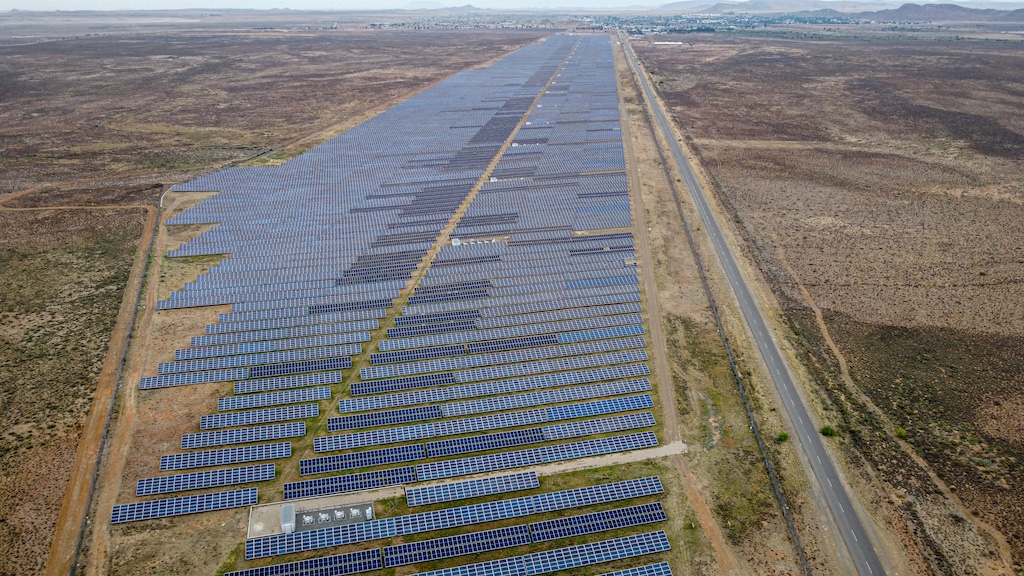
17 Oct Inside renewable energy land deals
Long-term leases turn public land into corporate profit, but how are these deals structured, and are communities seeing their share? #PowerTracker investigates
Investigation: Thabo Molelekwa Data & PAIA research: Roxanne Joseph Photos & videos: Motlatsi Mofokeng

The #PowerTracker team visited the De Aar Solar Power project, situated on municipal land leased land to Globeleq, an international renewable energy company, for solar power projects
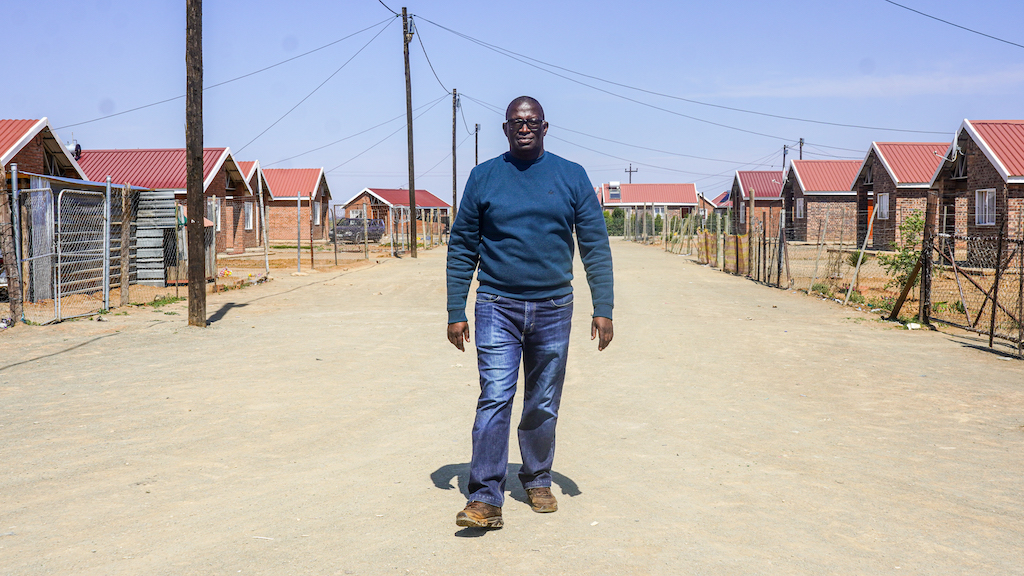
Local entrepreneur Anthony Olifant: ‘Our community is relatively short of land. When renewable energy plants come in, land is immediately available [to them]. But when our small farmers and entrepreneurs look for land, it is not there.’
Using the Promotion of Access to Information Act (PAIA), over the past nine months the Oxpeckers #PowerTracker project requested lease agreements and related documents from renewable energy developments nationwide.
The purpose of these inquiries, sent to Eskom and private companies, was to determine how much public land is being used in South Africa’s renewable energy rollout, and whether municipalities and communities are receiving fair returns from the deals.
The #PowerTracker team also approached several municipalities for information about the land deals; some provided full cooperation, while others delayed responses or ignored the inquiries.
The Emthanjeni Municipality in De Aar, a small town in the Northern Cape, agreed to cooperate by demonstrating how these lease arrangements work and what they mean for local residents. The municipality has leased land to Globeleq, an international renewable energy company, for solar power projects.

How land gets allocated
During a recent visit by the #PowerTracker team, Humphrey Joka, senior manager for community services at Emthanjeni Municipality, explained the procedure for renewable energy companies seeking municipal land: “Companies send their application to the municipal manager, which then goes through exco and the council for approval. Once service-level agreements are in place, public participation follows to ensure the community is informed and consulted.”
Council resolutions and legislative compliance are central to approvals, he said. “The council adopts a resolution to agree in principle to the lease, subject to legislative conditions. Once these are met, we grant permission. Even if it’s not our land but within our jurisdiction, we consult all relevant stakeholders before approval.”
“Public participation and environmental compliance follow the signing of the service-level agreement and memorandum of understanding,” he added.
Joka said municipal engagement extends beyond final approvals: “Through ward meetings and council engagement sessions, we involve communities before granting any approvals. We integrate developments into our Integrated Development Plan to align them with broader economic strategies.”
“Land is a sensitive issue; any use of municipal land must ultimately benefit all residents,” he added.
But local entrepreneur Anthony Olifant painted a different picture. “As people in the community, we know absolutely nothing about that process. We just know there are projects in certain areas, but we don’t know how funds or land allocations are managed. Communication before a project starts is minimal,” he said.
On land allocation specifically, Olifant raised concerns: “Our community is relatively short of land. When renewable energy plants come in, land is immediately available [to them]. But when our small farmers and entrepreneurs look for land, it is not there,” he said.

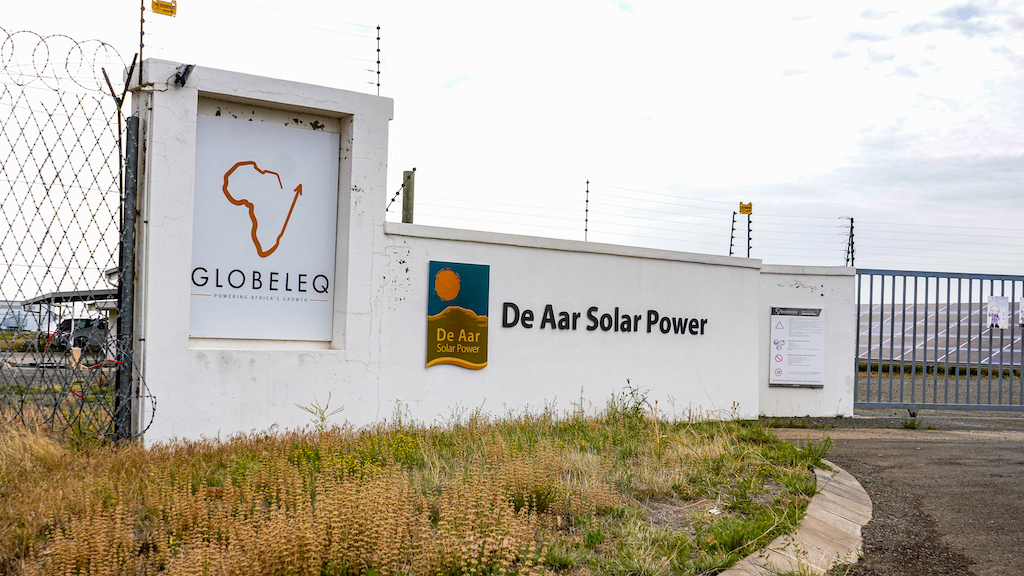
The municipality entered into a 20-year lease agreement with Globeleq, owned by British International Investment and Norwegian investment fund Norfund, for about 100ha of municipal land in 2014
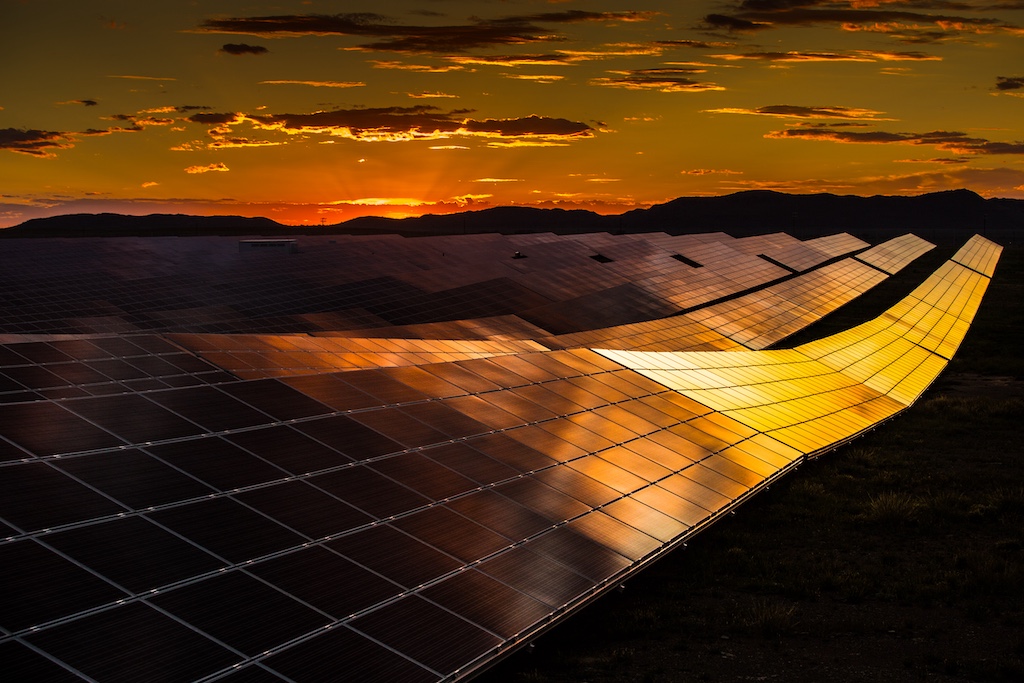
Globeleq said lease payments made to the municipality contribute to local revenue and municipal service delivery. Photo supplied
The Globeleq deal
The municipality entered into a 20-year lease agreement with Globeleq, owned by British International Investment and Norwegian investment fund Norfund, for about 100ha of municipal land in 2014.
“The lease allows the renewable energy company to occupy and use municipal land for a fixed period in return for rental payments, while ownership remains with the municipality,” Joka said. “The council ensures the municipality receives fair compensation for use of public assets.”
He acknowledged that its early agreements with the company were not always advantageous. “When Globeleq first arrived, we were not familiar with renewable energy. In hindsight, we realised we may not have negotiated as strongly as we could have,” he said.
Joka explained that the early agreements did not fully account for inflation or the financial potential of large-scale renewable projects. “Over time we renegotiated aspects to ensure the municipality receives adequate compensation. We now maintain monthly or quarterly engagements with Globeleq to track compliance with the agreements and ensure commitments align with community interests,” he said.
According to Joka, “Our agreements prioritise the interests of the 46,000 residents of Emthanjeni. A portion of the lease payment is directed to the municipality’s service delivery budget.”
No consolidated public account showing the full value generated from these lease agreements or how much reaches the community was made available to #PowerTracker. The complete financial picture remains unclear.
In response to questions sent via email, Globeleq confirmed that the De Aar Solar Power project operates on land leased from the municipality under a notarially registered long-term agreement. “The lease period is generally tied to the duration of the power purchase agreement with Eskom, or the useful life of the facility,” said Nicole Meyer, commercial and compliance manager at Globeleq South Africa management services.
Lease payments are made periodically to the municipality, contributing to local revenue and municipal service delivery. The municipality receives fair compensation and complies with applicable legislation, Meyer said.
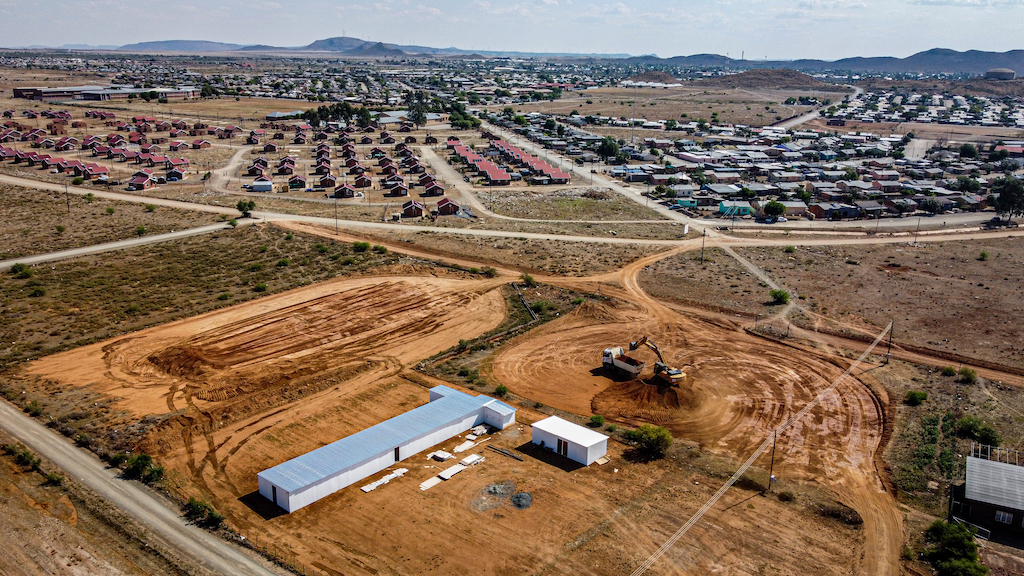
A sand pit excavated for construction of renewable energy developments is situated on the edge of the Kareeville township
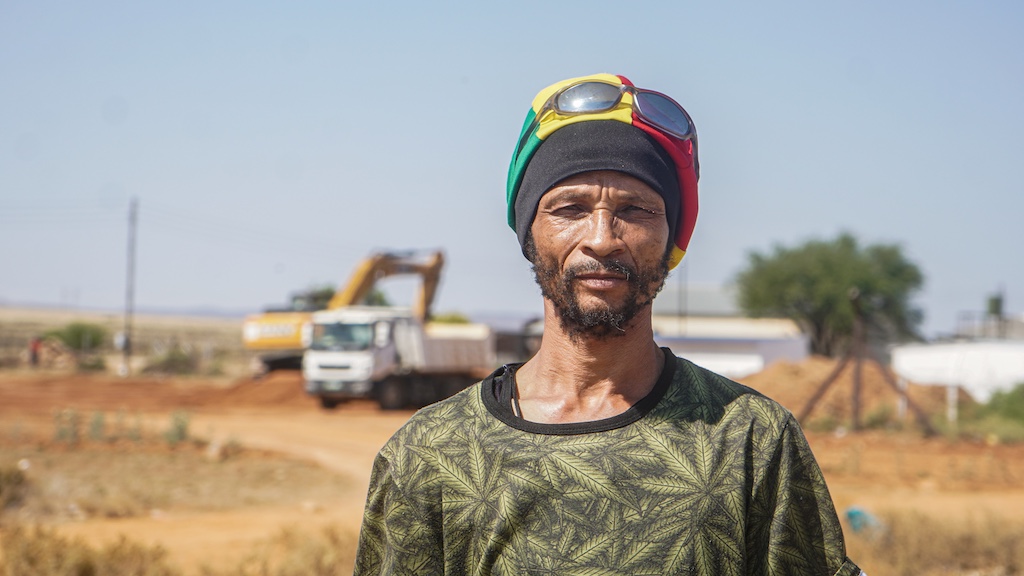
Local resident Romeo Booysen said dust from the development has had ‘a big impact on us. Our homes can’t stay clean, and it’s difficult even to cook because of all the dust.’
Municipal resources
“High unemployment, poverty and inadequate infrastructure mean hosting these projects is not without challenges,” Joka said. “Construction activities strain municipal water, electricity and sanitation systems.”
“Municipalities provide essential services, yet service delivery impacts are often overlooked. We’ve had to raise these issues with the Department of Energy to improve collaboration and ensure communities are supported.”
Both Globeleq and the Sibona Ilanga Trust, which holds an 8% equity stake in the project, emphasised the benefits of local employment and enterprise development. During construction, some local residents were employed, but Olifant said the contractors brought in skilled labour from outside.
Olifant said while jobs were helpful, broader economic participation was limited: “Most of the real money goes to the contractors and big corporates. Unless they start genuine partnerships with the community, we cannot say we are truly benefiting from the projects.”
Olifant questioned whether municipalities should continue allocating land to renewable energy projects: “I don’t think it is wise for municipalities to keep giving land for these projects. Land should always be prioritised for local small farmers, communities and businesses so they can grow. Most of the real money from these projects leaves our community because big corporates and contractors take it out.”
Joka responded that the municipality continues to track compliance and community impact. “We monitor how projects are executed and whether they deliver on agreed obligations, including employment and community development. Our role is oversight, not operations,” he said.
Joka explained the municipality’s approach to ensuring long-term benefit: “We include socio-economic development requirements in all agreements, ensure service delivery is maintained and monitor compliance. But balancing corporate, municipal and community interests is challenging. Municipalities must protect public land and ensure it serves residents’ needs.”

Local development
The company contributes to local socio-economic development initiatives under South Africa’s Renewable Energy Independent Power Producer Procurement Programme (REIPPPP), including education support, bursaries and enterprise development programmes intended to operate throughout the 20-year life of the project, said Hlengiwe Radebe, Globeleq’s economic development director in South Africa.
The Sibona Ilanga Trust, which holds an 8% equity stake in the project, also channels benefits to the community. Zukile Tom, the trust’s executive programme manager, said it represents the wider community, not a small group of beneficiaries.
Tom explained that awareness and participation are central to the trust’s work: “Ownership on paper is meaningless unless the community understands, engages with and can hold the trust accountable. We invested heavily in roadshows, hall meetings and public consultations. Staff were placed in De Aar to manage communications, address concerns and ensure direct access to trustees.”
The trust, according to Tom, pairs community trustees with independent trustees who add financial, human resources, legal and strategic expertise. An economic development director helped drive the legal setup and consultants ran awareness campaigns so residents understood their roles.
“Since 2016 the trust has funded 167 students to attend tertiary institutions, supported food gardens across four service areas and assisted small businesses, including bakeries, vegetable gardens and trading ventures,” Tom said.
Early scepticism was widespread, he added. “Residents feared promises would not materialise. Transparency and consistent delivery gradually built trust. As grants were paid, students supported and youth programmes ran successfully, community participation increased.”
Tom said the trust focuses on translating corporate investment into tangible benefits. “Equity alone does not ensure impact. The community must understand, participate and hold trustees accountable. That is why we focus on transparency, awareness and governance.”
Olifant acknowledged the trust’s positive impacts: “In terms of social development, the impact is much bigger. Globeleq and their trust send children to universities, and we have many graduates coming through their programmes. The trust provides funds for business activities, community projects and youth development.”
“They also bring economic opportunities. Many of our small businesses had opportunities to prove themselves and to create work in the community,” he said.
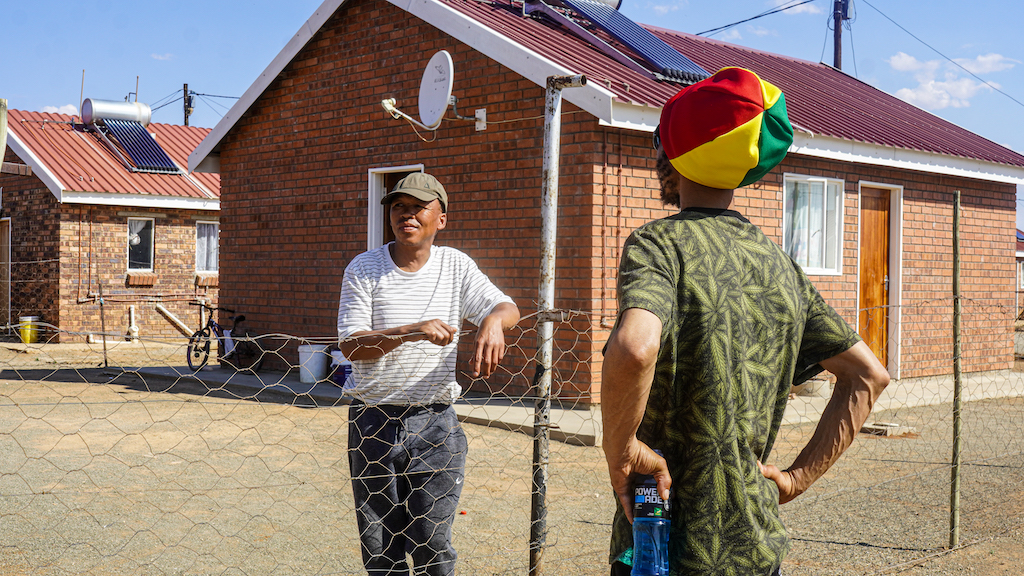
The Sibona Ilanga Trust, which holds an 8% equity stake in the solar project, focuses on translating corporate investment into tangible benefits for local communities
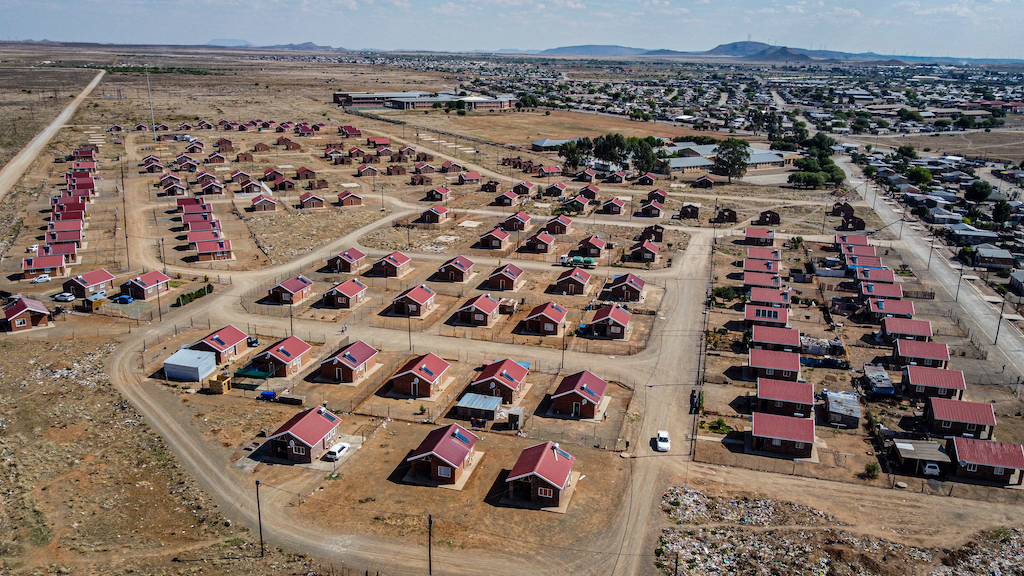
No consolidated public account showing the full value generated from the lease agreements or how much reaches the local community was made available to #PowerTracker
PAIA trail
#PowerTracker has over the past nine months mapped 18 renewable energy projects involving land lease agreements across South Africa. Four of these are part of Eskom’s land-leasing programme launched in 2022, intended to cover more than 6,1000ha at Majuba and Tutuka power stations and expected to add 2,000MW to the national grid.
As of October 2025, only one of these projects – developed by independent power producer (IPP) Red Rocket – was set to move forward after having reached financial closure. Eskom announced in mid-October that it had discontinued the land leases scheme and will instead launch a standalone renewables business, Eskom Green, to work with IPPs to take its renewables-related ambitions forward.
The remaining projects mapped by #PowerTracker are located across Mpumalanga, the Eastern Cape, Limpopo, North West and the Western Cape, and include solar, wind, hydropower and battery storage initiatives. Currently, eight projects are operational, while the rest are still in planning or have secured environmental impact assessment approvals.
The projects reflect varying approaches to land use and community involvement. The Karino Hydropower Facility is based on land owned by a community property association representing over 200 black families, with developers claiming to pay well above market rates. In the Eastern Cape, the Cookhouse Wind Farm leases land from sheep farmers, allowing farming to continue alongside energy production. The Wesley-Ciskei Wind Farm project, investigated by #PowerTracker in April 2025, operates on land leased from 11 black families who receive 1,5% of project revenues through electricity sales to Eskom.
The #PowerTracker team submitted three PAIA requests and three requests for information to Eskom and five IPPs, seeking details of land leases, payment structures, the number of landowners per project and livelihood impacts. Two companies denied our request to provide information, one cited confidentiality and another indicated Eskom no longer intended to proceed with their lease. Eskom itself did not respond to our request.
• Post-publication, Eskom’s media desk responded that its land lease programme was designed to fast-track new generation capacity by making Eskom-owned land available for renewable projects.
Proof of its effectiveness was Red Rocket achieving financial close on the Tournee Solar Park, Eskom said. It is “the first project to advance to construction under our pioneering land lease programme. This milestone demonstrates the critical role of public–private partnerships in unlocking South Africa’s renewable energy potential.”
Asked about the lease agreements that did not go ahead, Eskom’s media desk said the land parcels awarded “will be used for future renewable energy initiatives or new partnerships, in accordance with changing market conditions and best practices”.
The media desk did not share copies of land lease agreements requested, citing confidentiality.
Find details of land deals for renewable energy projects at our Get the Data section here, on our #PowerTracker tool here
This investigation was supported by the African Climate Foundation’s New Economy Hub
